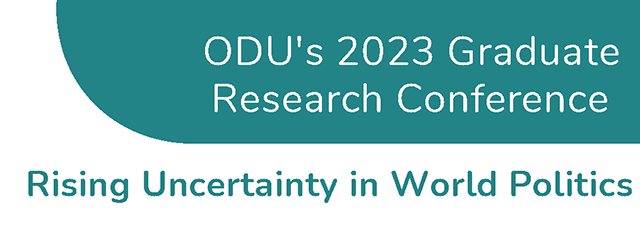Student Type
Graduate
University
Old Dominion University
Country
United States
Document Type
Conference Paper
Description/Abstract
The centrality of NATO to the progression of the war is one of the fundamental issues in the current Russia-Ukraine conflict. Analysts generally agree that Russia's motivations for starting the conflict stem from Ukraine’s ambitions to join NATO, as Moscow sees such a move as a flagrant encroachment of Western Europe onto its territory. Special scrutiny of NATO as a regional alliance and its ongoing stability that has survived the cold war is necessary in light of the developments in Ukraine. In order to justify the scientific study of NATO's persistence, one must consider the war vis-a-vis the Ukraine-NATO issue and its worldwide repercussions. Global supply chains have been severely disrupted, forcing companies to adjust their practices. As a result, prices of key commodities have increased, and some have even completely disappeared from the market. According to a report by the MIT Sloan School of Management, “One of the most alarming supply chain issues resulting from the Russia-Ukraine war is food shortages, particularly acute in low-income countries in Africa” (Stackpole, 2022, p.2) The report further points out that “Ukraine and Russia account for about a third of the world’s wheat and a quarter of barley production, not to mention some 75% of the sunflower oil supply — all critical commodities for keeping humans fed” (p.2). From this report, one can begin a series of inquiries by posing the question, if NATO membership is the catalyst for a war with such far-reaching global consequences, what appeal does membership of this alliance have that justifies the intolerable human toll on the daily lives of people around the globe? The more specific question is, how has a 70-year-old military alliance survived beyond its original raison d'être? One may legitimately ask if the Iron Law1 model of administration is a key element in the explanation of the continued existence of NATO as an alliance in the process of attempting to respond to the latter question.
Disciplines
Eastern European Studies | International Relations | Political Theory
DOI
10.25776/h97t-9g45
Session Title
Ukrainian Resilience
Location
Webb Center, Isle of Wight Room
Start Date
2-10-2023 12:00 AM
End Date
2-10-2023 12:00 AM
Upload File
wf_yes
Included in
Eastern European Studies Commons, International Relations Commons, Political Theory Commons
NATO Persistence & the Iron Law Model
Webb Center, Isle of Wight Room
The centrality of NATO to the progression of the war is one of the fundamental issues in the current Russia-Ukraine conflict. Analysts generally agree that Russia's motivations for starting the conflict stem from Ukraine’s ambitions to join NATO, as Moscow sees such a move as a flagrant encroachment of Western Europe onto its territory. Special scrutiny of NATO as a regional alliance and its ongoing stability that has survived the cold war is necessary in light of the developments in Ukraine. In order to justify the scientific study of NATO's persistence, one must consider the war vis-a-vis the Ukraine-NATO issue and its worldwide repercussions. Global supply chains have been severely disrupted, forcing companies to adjust their practices. As a result, prices of key commodities have increased, and some have even completely disappeared from the market. According to a report by the MIT Sloan School of Management, “One of the most alarming supply chain issues resulting from the Russia-Ukraine war is food shortages, particularly acute in low-income countries in Africa” (Stackpole, 2022, p.2) The report further points out that “Ukraine and Russia account for about a third of the world’s wheat and a quarter of barley production, not to mention some 75% of the sunflower oil supply — all critical commodities for keeping humans fed” (p.2). From this report, one can begin a series of inquiries by posing the question, if NATO membership is the catalyst for a war with such far-reaching global consequences, what appeal does membership of this alliance have that justifies the intolerable human toll on the daily lives of people around the globe? The more specific question is, how has a 70-year-old military alliance survived beyond its original raison d'être? One may legitimately ask if the Iron Law1 model of administration is a key element in the explanation of the continued existence of NATO as an alliance in the process of attempting to respond to the latter question.

